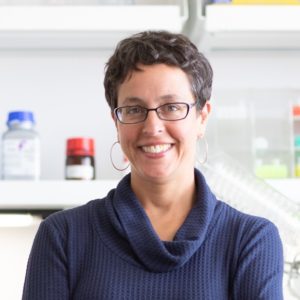by Buck Institute
October 1, 2019 . Press Release
The Buck gets $3.8 M Transformative Research Award from the NIH
A bit more than a million years ago, a population of Southeastern Asian mice developed the remarkable ability to regrow axons after injury to its brain. Could there be a way to exploit the gift that evolution conferred to these animals to benefit human health? A five-year $3.8 M Transformative Research Award from the National Institutes of Health will allow researchers at the Buck Institute to answer this question using a new method that pinpoints genetic causality for trait differences between closely related species.
 The method, developed by Buck professor Rachel Brem, PhD, is at the heart of the grant and holds the promise of boosting lifespan or healthspan in humans by exploiting other advantages acquired by animals during the course of evolution. Among the examples is the aquatic axolotl, which is capable of regenerating limbs, jaws, spines and even the brain. Likewise, there are other mouse species with stark differences in longevity, immunity, and susceptibility to cancer.
The method, developed by Buck professor Rachel Brem, PhD, is at the heart of the grant and holds the promise of boosting lifespan or healthspan in humans by exploiting other advantages acquired by animals during the course of evolution. Among the examples is the aquatic axolotl, which is capable of regenerating limbs, jaws, spines and even the brain. Likewise, there are other mouse species with stark differences in longevity, immunity, and susceptibility to cancer.
“Across the tree of life, organisms have acquired remarkable disease and stress resistance traits, some of which far outstrip the programs that are found in humans,” said Brem, who is the lead investigator on the grant and will be working with two other labs at the Buck plus a collaborator at the University of California, Berkeley. “We’re motivated to understand how these natural characteristics have come to be and to be able to borrow their logic for ourselves. This is not science fiction – our new method makes a lot of new experiments possible.”
Brem’s method is also being deployed in other projects at the Buck involving evolutionary “outliers”–wild animal species that have developed unusual resistance to stress, disease, pathogens, and the breakdown of tissues during aging. “The potential return on investment of this grant is enormous,” said Brem. “If we succeed, a new field will open up – experimental genetics on far-flung, reproductively isolated animal species. We’ve got a lot of great science ahead of us, and we are eager to get to it.”
“We are extremely excited and proud to receive this prestigious grant,” said Buck President and CEO Eric Verdin, MD. “The fact that only eight Transformative Research Awards were granted across the country speaks to the game-changing power of Rachel’s work and to the collaborative environment at the Buck which will enable us to move the research forward.” The Verdin lab has developed a strategy to induce viral mutations on a genomic scale that will be used in the research. The Ellerby lab will apply their expertise in neuroscience and stem cell modeling. And the lab of Diana Bautista, PhD at UC Berkeley will be involved in massively parallel tests of regeneration in hybrid neurons. The genes emerging from the research will shed new light on routes to recovery following stroke and traumatic brain injury.
Prior to this point, searching for the genetic basis of a trait could be only done between individuals of the same species. Biologists often resorted to guessing when trying to answer a similar question between species. Brem’s new method, which was detailed last year in the journal Nature Genetics, involves mating two species to form a sterile hybrid, and then pummeling it with artificial mutations; those that perturb a trait of interest become a signpost for the relevant DNA sequence differences between the two parents. For this research, the Buck has already received stem cells from a hybrid between Mus castaneus and the common European house mouse, M. musculus, which was created at Erasmus Medical Center in the Netherlands.
This work is funded under NIH Grant R01 NS116992.
The NIH Director’s Transformative Research Award, established in 2009, promotes cross-cutting, interdisciplinary approaches and is open to individuals and teams of investigators who propose research that could potentially create or challenge existing paradigms.
Science is showing that while chronological aging is inevitable, biological aging is malleable. There's a part of it that you can fight, and we are getting closer and closer to winning that fight.
Eric Verdin, MD, Buck Institute President and CEO